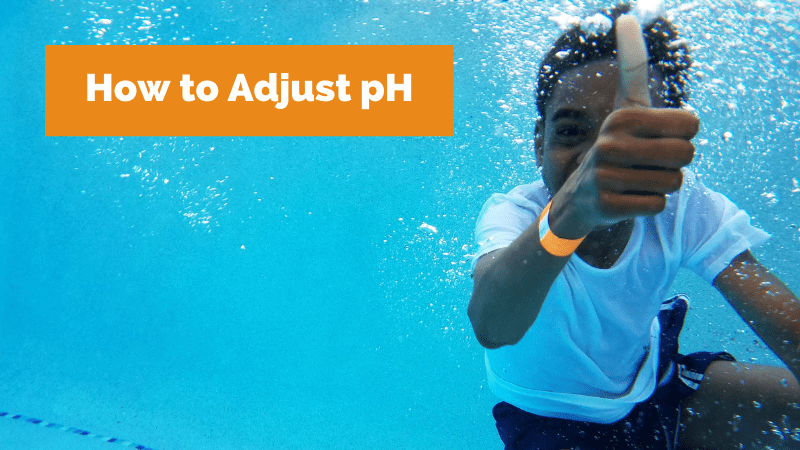
Keeping the appropriate pH balance in your pool is one of the most important things you can do to keep your pool clean, healthy, and usable all season long. A proper pH makes the water safe for swimming, helps your sanitizer work more effectively, and allows your pool equipment to last as long as it’s supposed to.
What is pH?
The pH scale ranges from 0-14 and measures how acidic or basic a water-based solvent is. In our case, pool water. Pure water measures a 7 (neutral) on the scale. Anything below 7 is acidic (the closer to 0, the more acidic) and anything above 7 is basic (the closer to 14, the more basic).
For swimming pools, we’re going to want the pH pretty close to neutral, which is 7.4. Acidic water eats away at pool liners and equipment and irritates swimmers with itching, burning, and other undesirable ailments. Basic water can get cloudy and make your pH a lot harder to balance.
The Recommended pH in a Pool: 7.2-7.6
Fun fact: the ideal pH for a pool is 7.2-7.6, which is very close to the typical pH range of the human body. This makes sense, as swimming in water with the same pH as you is a lot more comfortable.
Very close to neutral, a pH of 7.2-7.6 is extremely clear and safe for swimmers while also being gentle on your equipment, so keeping your pH in that range is essential.
You should be checking your pH (as well as your alkalinity and calcium hardness) once a week. Refer to our Pool Chemistry Cheat Sheet for everything you need to know to keep your water balanced.
Balanced water is even more important now as we continue to go through a chlorine shortage. Making sure your water is balanced is one of the best ways to get the most out of your chlorine.
How to Raise pH in a Pool
If your pH is below the ideal range, you need to raise it. Acidic water is harmful to pool equipment as well as swimmers. Generally, water can become acidic after rainfall, which is generally between a pH 5 and 5.5. Or, after a lot of activity, like a pool party, the water can become acidic. Thankfully, raising the pH level is easy.
Use BioGuard Balance Pak 100 (soda ash) to increase the alkalinity, which in turn increases the pH of the pool. You want the alkalinity of the pool to be between 125 and 150 parts per million.
We do not recommend using baking soda. While it might sound tempting, the cost is usually higher when using baking soda because you need so much of it to adequately raise the pH. Plus, using baking soda can lead to the alkalinity of the pool being too high, which causes cloudiness and makes the pH harder to adjust.
How to Lower pH in a Pool
A pH that’s too high can cause a lot of problems, including rendering your chlorine useless, which is dangerous. With ineffective chlorine, your water isn’t clean and could lead to health problems for swimmers. Plus, with the chlorine shortage, you want to get as much as you can out of your chlorine, so having to completely replenish your pool is going to be difficult and expensive.
The most obvious sign your pH may be too high (aside from testing it, which you should do a few times a week) is cloudy water. You could also see scaling or notice some clogged pipes or filters. Common causes of a high pH include a high alkalinity or improperly balanced chemicals.
Use BioGuard Lo ‘N Slo (sodium bisulfate) to lower your pool’s pH. This will help lower the alkalinity into the ideal 125-150 ppm range, which then moves the pH into its ideal 7.2-7.6 range. We do not recommend using muriatic acid, which is also known as hydrochloric acid. Muriatic acid is extremely caustic and can damage the pool surface. BioGuard Lo ‘N Slo is a safer, easier way to lower your pool’s alkalinity and pH.
Skip the Chemistry with Free Water Testing
If science isn’t your thing, or you’d just feel better with some expert advice, we offer free water testing. Bring your water sample to any Zagers location, or drop it off at your convenience. We’ll analyze it, let you know where your levels are at, and let you know what you need, including product recommendations, to get your water back in swimming shape.